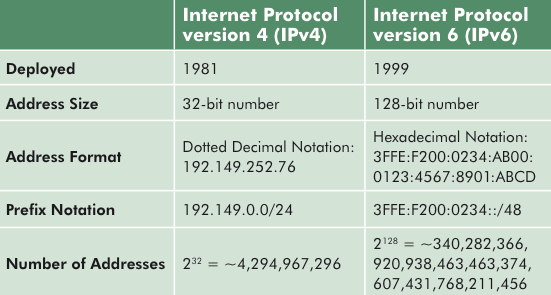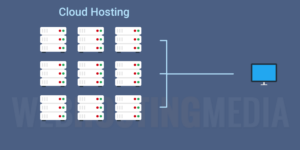IPv6 is short for “Internet Protocol Version 6”. IPv6 is the Internet’s next-generation protocol, designed to replace the current Internet Protocol, IP Version 4.
In order to communicate over the Internet, computers and other devices must have sender and receiver addresses. These numeric addresses are known as Internet Protocol addresses. As the Internet and the number of people using it grows exponentially, so does the need for IP addresses.

IPv6 is a standard developed by the Internet Engineering Task Force, an organization that develops Internet technologies. The IETF, anticipating the need for more IP addresses, created IPv6 to accommodate the growing number of users and devices accessing the Internet.
IPv6 (Internet Protocol (IP) version 6) is the Internet’s next-generation IP intended to replace IPv4.
IP is the language that computers use to communicate with each other on the Internet. An IP address is a unique number assigned to every computer connected to the Internet. IPv4 is the protocol currently used to direct almost all Internet traffic.
The growth of the Internet created a need for more addresses than are possible with IPv4. The Internet Engineering Task Force developed IPv6 in anticipation of IPv4 address exhaustion.

In IPv4, every IP address is 32 bits long, which allows for 4.3 billion unique IP addresses. IPv4 addresses consist of four numbers separated by periods.
For example: 216.27.61.137
In comparison, IPv6 addresses are 128 bits long, which allows for approximately 3.4 x 1038unique IP addresses. IPv6 addresses consist of eight groups of hexadecimal numbers separated by colons.
For example: 2001:cdba:0000:0000:0000:0000:0000:0068
To save space, IPv6 often omits groups of numbers that contain all zeros, leaving a colon separator to mark the gap.
For example: 2001:cdba::0068
Every device on the Internet is assigned a unique IP address for identification and location definition. With the rapid growth of the Internet after commercialization in the 1990s, it became evident that far more addresses would be needed to connect devices than the IPv4 address space had available. By 1998, the Internet Engineering Task Force (IETF) had formalized the successor protocol. IPv6 uses a 128-bit address, theoretically allowing 2128, or approximately 3.4×1038 addresses. The actual number is slightly smaller, as multiple ranges are reserved for special use or completely excluded from use. The total number of possible IPv6 addresses is more than 7.9×1028 times as many as IPv4, which uses 32-bit addresses and provides approximately 4.3 billion addresses. The two protocols are not designed to be interoperable, complicating the transition to IPv6. However, several IPv6 transition mechanisms have been devised to permit communication between IPv4 and IPv6 hosts.

